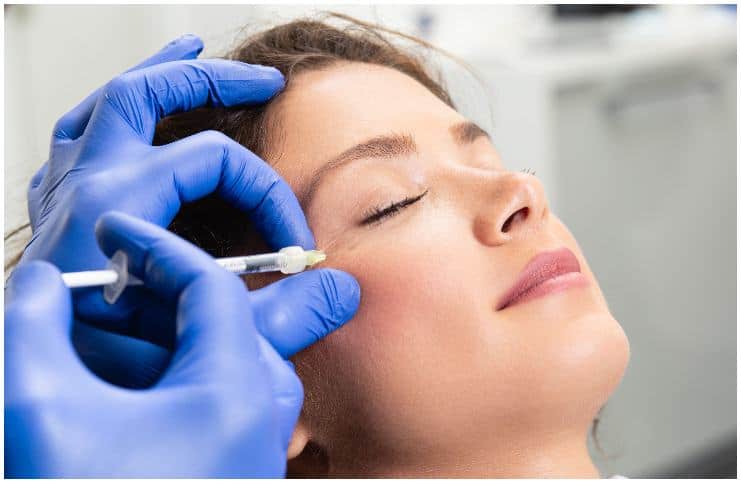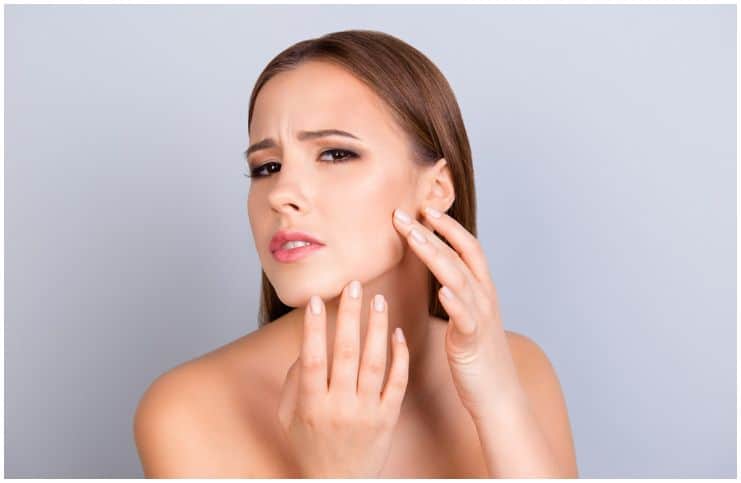Hyaluronic Acid (HA), also named hyaluronan or sodium hyaluronate, is a natural glycosaminoglycan that occurs naturally in connective tissues and skin’s structure.
It is composed of equal molecules of 2-acetamido-2-deoxy-d-glucose and d-glucuronic acid and, that alternate in the heteropolysaccharide.
The average individual has roughly 15 grams of HA in his or her body with 1/3 of which is synthesized and degraded daily.
Meyer and Palmer discovered HA in 1934 and it was used as an egg white substitute in bakery products. In the laboratory, it is made by bacteria or is extracted from rooster combs. Therefore, some HA supplements are plant-based and some are not.
Uses
It is usually used in anti-aging products that can be topically applied to the skin or as a pill or injection for joint disorders such as osteoarthritis. Also, it is used during some eye surgeries and as a lip filler in plastic surgery.
Side Effects of Hyaluronic Acid Oral Supplements or Injections
Note – the supplement form of HA is considered safe for most people. However, excessive use (or injections) can lead to some side effects.
Also, drinking alcoholic beverages while taking this supplement is not recommended since alcohol may increase the risk of side effects of HA.
Side effects of HA include gastrointestinal discomfort, headaches, ulceration, sleepiness, pain in the joints, loss of appetite.
Pregnancy
Pregnant and nursing women should not take this supplement since it seems that this acid is able to enter the breast milk and can negatively affect a developing baby.
Also, it interacts with certain nonsteroidal anti-inflammatory prescription medications.
Skin
After using a cream with HA, some people can experience slight redness or extreme itching.
In addition, after injection with HA, some experience pain at the injection site and itching.
Cancer
HA may promote the spread and growth of cancer cells and should not be used by cancer patients because when a cancer cell with this CD44 protein attempts to spread and grow, this supplement helps it do so.
Furthermore, according to a 1996 study at the Department of Anatomy and Cellular Biology, Boston, USA, HA increases attachment of ovarian and breast cancer.
Liver
Like any other prescription medicines, supplements have chemical substances that, once absorbed, are processed by the liver.
The belief is that supplements are harmless because they are natural compounds and don’t harm, so the connection is never on the table.
Also, dietary supplements are not inspected by the US Food and Drug Administration to the same degree as prescription drugs.
Health Benefits
Simply put, HA has potent anti-aging functions and is one of the best hydrating substances for skin or breakout-prone skin.
Good For Dry Skin
This acid’s moisture-binding property is beneficial and important when it comes to the skin’s aging process. It is considered a glycosaminoglycan (it has the ability to hold a large volume of water) and 1 gram of HA can hold up to 6 liters of water.
Nevertheless, due to its big size (when compared to other acids), it is harder for skincare manufacturers to produce a product with HA that can penetrate the skin.
Sunburn
When skin is exposed to excessive ultraviolet rays, it becomes inflamed and the cells in the dermis stop producing HA that can lead to an increase in the rate of its degradation.
Thus, the longer you are exposed to the ultraviolet rays, the worse the damage to the skin. A cream containing HA can stimulate collagen production in your skin as well as increase the moisturizing level.
Synovial Fluid
Synovial fluid removes waste from the cartilage, works as a shock absorber lubricating the fluid in the joint tissues, and delivers nutrients to the cartilage.
HA is secreted into the synovial fluid, making the fluid viscous. However, as we age, the viscosity of the joint fluid lessens and can lead to joints problems. You can intake by mouth 50 milligrams of HA one to two times daily with meals.
Gum Disease
Gum disease is an inflammation of the gums that is caused by the bacteria in plaque. Gum disease can occur at any age, but it is most frequent among adults. Flossing and brushing regularly can help get rid of plaque.
HA is an essential component of the connective tissue in the gums and reduces any inflammation that leads to bleeding gums, plus, it helps with the regeneration of new gum tissue.
Eyes
It is found in the vitreous fluid (the clear gel that is found between the lens and the retina of the eyeball) in the eyes and gives them their characteristics and shape.
Additionally, during eye procedures, it is injected directly into the eye to help replace natural fluids that are lost during eye surgery.
Wrinkle Reduction
Skin starts losing HA as early as age 18, but skin damage from HA loss (such as wrinkles) don’t commonly show up until the early 40s.
Therefore, by reducing wrinkles, HA increases skin tone and makes the skin look supple and smooth.
Foods High in Hyaluronic Acid
Foods such as green leafy vegetables, soy products, and root vegetables contain this acid. More importantly, a diet rich in potatoes and sweet potatoes increases the amount that your body produces on its own.
Also, eat foods high in resveratrol (sources of resveratrol in food include the skin of grapes, peanuts, mulberries, raspberries, and blueberries), zinc, and magnesium which also increases the production of HA. Lastly, consuming plenty of water creates the proper conditions for HA to hydrate the skin and other cell tissues.
References https://www.ncbi.nlm.nih.gov/pubmed/10360824 https://www.ncbi.nlm.nih.gov/pubmed/11488992 https://www.ncbi.nlm.nih.gov/pmc/articles/PMC1861653/







